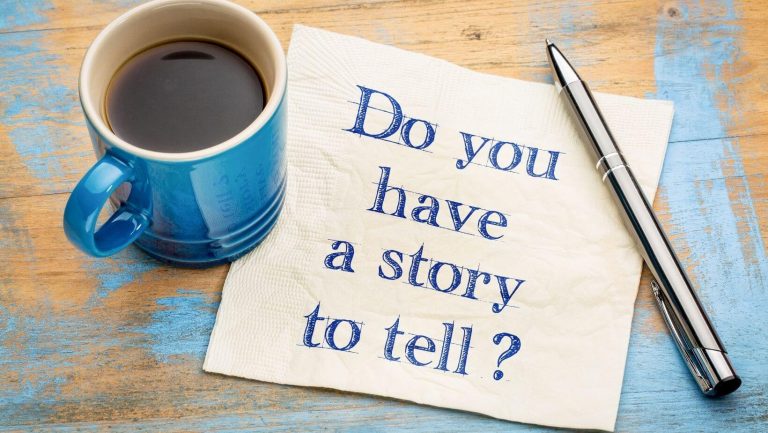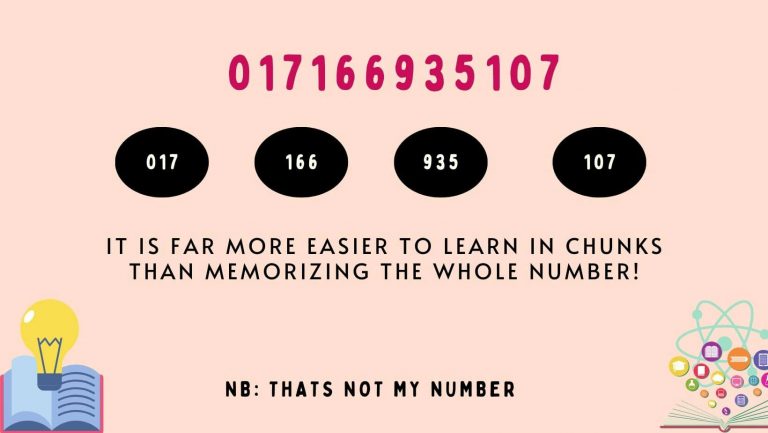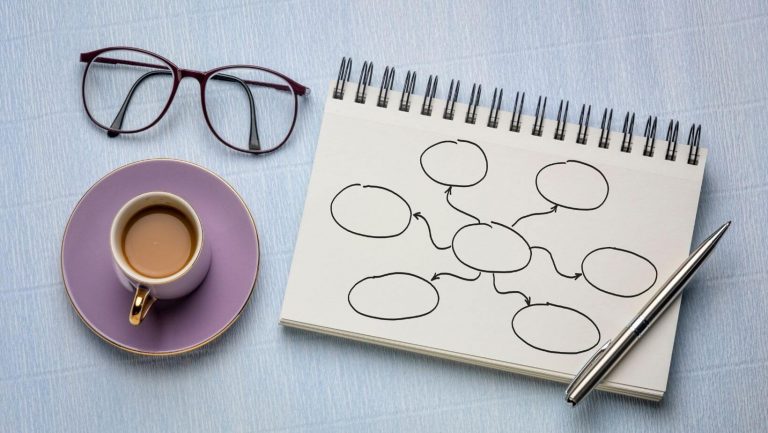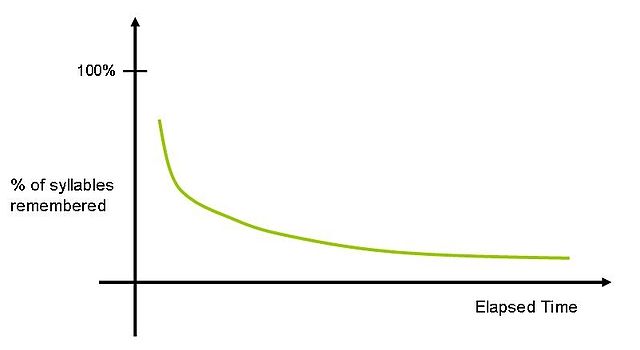Introduction
Students absorb millions of pieces of information each day. How much do you think they retain the next day? Research suggests we forget 50 % of what we learn within an hour and an average of 70% within 24 hours. So how do you overcome this? What is the hack to remembering more? This article will provide nine powerful memorization techniques for studying that will help to remember faster than ever.
How does our memory work?

Before knowing the memorization techniques for studying, let me briefly explain how our memory works inside our brains.
There are three stages:
Encoding:
This is the absorption of information from the environment. Almost all sensory information that we see, hear, feel, the smell is sent to our brain for the filter.
Storage:
Earlier, people assumed that Hippocampus was the part of the brain that deals with memory, but later research proved otherwise. This encoded information is stored around different parts of our brains. Science has still to discover about a specific part.
We have two types of memory; short-term and long-term. Short-term memory is the working memory that stores information for a short period. If that information is essential, then it is transferred to long-term memory. Otherwise, it is erased or lost amidst the other information.
For example, You make a list of stationaries that you are going to buy. After the shopping is over, you will likely forget about the list because it is not important anymore. But you are less likely to forget the route to the market because it is important to you. That piece of information is transferred to long-term memory.
Recall:
The information stored in our brains grows stronger with each recall. Revisiting the same neuron creates a more robust neural network and seals the information in your brain.
Now you know a simple idea about how your memory works. Let us take a deep dive into the nine memorization techniques for studying to help you learn faster. .
Memorization Techniques For Studying
1. Spaced Repetition
Spaced repetition means recalling any information at a specific interval of time.
Hermann Ebbinghaus came up with the term “The forgetting curve”, which describes how humans forget information over time. Repetitions can flatten the forgetting curve at different intervals. The idea of spaced repetition involves forgetting the information followed by retrieving it from the brain.
Students very easily mix rote memorization with spaced repetition. While rot memorization is passively learning the same thing, spaced repetition is an active information retrieval process.
How can students use this?
After studying a topic:
- Revise it on 3rd day (By active recall )
- Recall the information on the 7th day.
- Recall the information again after two weeks.
- Try to remember the information after one month.
You are likely to remember the information after this cycle of spaced repetition. If you have trouble manually maintaining the schedule, you can use Anki (a flashcard app) to help you.
2. Teach the topic
This technique derives from the Feynmann Technique. Although the Feynman technique was ideally used for learning, it is suitable for retaining information too.
Teaching is helpful because it helps to retrieve the information each time you explain it to someone else. As we have mentioned earlier, every recall strengthens the connection making your memory with that information stronger and stronger. Teaching someone is possibly the most straightforward technique to remember any information.
Suppose you are teaching maths in a primary school. On the first day, you teach a class what the multiplication of 16*16 is. The first time possibly you had to do the math. Think after 3-4 times of giving the same lecture, do you think you need to do the math again? It is stuck into your brain and will be until your last breath. That is how teaching works.
How to use this technique memorization technique
- Learn a topic
- Find a friend who has not yet known the topic
- Explain it to him
- Explain it to anyone who has an interest in similar topics.
3.Storytelling
Our brain loves stories. You probably still remember ” Little Red Riding Hood ” but don’t remember the last topic you read from your textbook.
Stories help us to visualize and imagine certain situations. When you read a story, you don’t imagine the words but the story being acted out like a movie. So it is easier for the brain to process and store.
Let me give you an example :
- Bread
- Fire
- Pencil
- Notebook
- Dog
- Mother
- Homework
- Angry
- School
- Dance
After reading these ten words, how many do you think you can remember after 1 minute? Probably 6-7 at best. But what if you turn the words into a story. The story might not make sense, but I’m sure that it will help you remember better.
“My bread got burnt in a fire. So I took my pencil and notebook and started searching for my dog. Mother wanted me to do my homework. But I was angry and didn’t want to go to school tomorrow. I don’t want to even attend the dance class.”
If you have read the story and visualized it in your brain, you will remember the article even after finishing the article. Give it a try.

How can students use this memorization technique?
Whenever you have any information to remember, turn it into a story. Try to make the story interesting. You will remember the story better if it is unique, unreal, vague, but simple.
4. Chunks:
What is the best memorization technique to remember numbers? It is called chunking; you can also call it batching. Chunking is also helpful for tables, lists, names.
When you are trying to memorize a large amount of information, chunk them into different groups. Similar types of materials should be chunked together. Chunking helps to remember because when you group different information, you have to remember less.
Remember chunks might not give 100% efficiency, but this technique will undoubtedly improve your retention. Usually, chunking should be associated with other memorization techniques like storytelling, mindmaps.

How can students use this memorization technique?
Whenever you come across a list, a number, or several names that you have to memorize, chunk them up. If required, memorize the chunks with the help of the previous storytelling method.
5.Imagine the application of the information.
Students get frustrated and ask themselves why do they need to study. But the question that they should instead ask is, ” Why should I know this certain topic?” If a student asks this question, his brain starts to engage with the information actively.
This question helps to find situations where you can apply this knowledge in real life. If you can’t act it out, at least you can visualize the application of the knowledge you just gained.
For example: If you are studying medicine, you have to learn many medicine names. The way to remember this information is to imagine how you will prescribe this medicine to the patient. You can visualize a complete Doctor-Patient interaction in your mind.
This active engagement with information is going to help you retain it faster and longer.
How will students use this memorization technique?
Whenever you have to memorize anything, think about the application. Imagine it, visualize it, and if possible, act it out. Feel the circumstance as much as possible. Think about ways that how this information can help you and others.
6.Mnemonics and Acronyms
This memorization technique is probably the commonest of them all. We have all tried mnemonics & acronyms in our lives. But why are acronyms so down the list?
This is because I have seen students make mnemonics about everything they read. Then before exams, they remember the mnemonics but don’t remember why they made it. It is funny, and it is true. But that doesn’t mean you should not make mnemonics.
Let us memorize the names of the first 8 US presidents through mnemonics:
Will A Jolly Man Make A Jolly Visitor?
W=George Washington
A=John Quincy Adams
J=Thomas Jefferson
M=James Madison
M=James Monroe
A=John Quincy Adams
J=Andrew Jackson
V=Martin Van Buren
You can use mnemonics and acronyms for anything but make only one mnemonic per session. Make mnemonics about the essential information only. Make sure you write the mnemonic somewhere in your notebook so that you don’t have to make another one, even if you forget.
How can students use this technique?
Every student knows how to make mnemonics. It is best if you use your mnemonics rather than relying on the internet. Vague and weird mnemonics are what sticks to the brain faster and remains longer.
8. Memory palace
Memory palace, also known as the Method of Loci, is a very popular memorization technique. But the reason it is mentioned so late is that most students cannot utilize this technique properly. They fail because creating the memory palace requires extensive creativity and imagination.
To create a memory palace, you need to think of a familiar space, room, or location. Then in your mind, you need to place the pieces of information on a different portion of the room. You can use your own home, a nearby cafe, a library, or anything you are very familiar with. Let us come up with an example.
Suppose you choose your bedroom as your palace and you are trying to memorize these words:
- Happy
- Cat
- Sister
- School
- Oven
Now imagine you entered the room and saw a happy cat above your cupboard. Your sister is sleeping in your bed. The school teacher is using your study table. When you open your cupboard there are no clothes but only an oven.
The number one technique that we top memory athletes use is still and will always be the memory palace. If someone were to learn one thing, it should be that.
Nelson Del -USA memory champ. Tweet
Yes, this sounds bizarre, and that’s why it is very easy to remember. You can even tie storytelling with this technique. The American Physiological Society study showed that 92.9% of students experienced an improvement in information recall after only three 60-min sessions of training by building memory palaces. If only three sessions can provide such results, imagine how much it can help a student who regularly practices creating the Memory Palace. It requires excellent practice to master this technique, but it is worth it.
How can a student use this technique?
Students can create a separate memory palace for different chapters. Make sure not to use the exact place/room/location twice. You can memorize a large amount of information by using every element of the area. No matter how odd it may be, memory palace or the method of loci is considered to be the best memorization technique by most memory athletes.
9.Tuning and rhyming:
Have you ever wondered how you seem to remember all the nursery rhymes? Our brain has an affinity for tunes and rhymes. It likes to remember things that come with a certain pattern.
According to this study conducted on fourth-grade students & teachers in California, rhythmic mnemonics dramatically enhances retrieving information. But they aren’t taught in this way because of the lack of the teacher’s confidence.
Children learned alphabets through the “ABC” song and states’ names by the “50 Nifty United States” song. However, you don’t need to create a full-blown song or rhythm. You only have to create two lines in a similar pattern. Otherwise, you can also try to use different tunes for remembering different sorts of information.
How can students use this memorization technique?
Students should try to associate important information with the music of recently heard songs. This is pretty easier than making your own rhymes. But if possible, make patterns of sentences easier for the brain to encode and store. Try to recall the rhyme once in a while to seal the data forever.
10. Mindmapping
Our visual memory is the strongest among the other types of memories. That is why we tend to remember more information through pictures and visuals.
Mindmapping is a common technique for connecting pieces of information and finds a logical connection between them. But it can be beneficial for memorization too. A mindmap is easy to remember because it is similar to our neural network; it is how our brains store things. So it is much easier for the brain to encode the information when studying through a mindmap.
How to make a mindmap:
- Take a page and write a heading at the centre of the page.
- Draw key branches of the topic and mention the. You should use different colours for different branches.
- These branches should have sub-branches that leads the map to spread. It is recommended to use diagrams and pictures at the end of the sub-branches to make it more effective.

How can students use this memorization technique?
Whenever some topic demands both memorization and understanding, create a mindmap for it. Creating a mindmap will help students to visualize the information in different branches, simultaneously helping with comprehension.
Conclusion
Memorization techniques are not magic spells; they are skills that will develop over time. Once you start to use them, you will have the upper hand in memorizing anything. As you continue, you will slowly feel how your memory has improved because of the practice.
Our memory is like a muscle that needs training. You can train it by using these memorization techniques for studying. It would be best if you didn’t use a single memorization technique but a combination of all while studying. A combination of the techniques is what is going to give you the maximum results.
Hope this helps. Best of luck with your studies.




2 thoughts on “10 Memorization Techniques for studying: Learn better and faster”
This is beautifully interactive!!
Thank you so much!